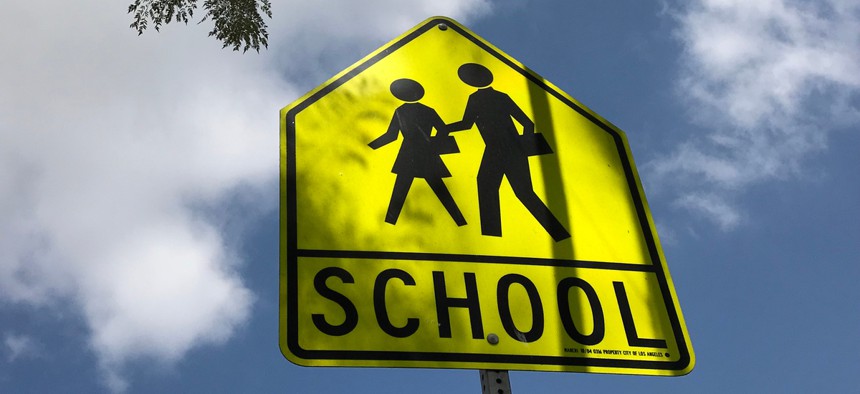Studies: Arming Teachers Is Likely Not an Effective Deterrent for School Shootings

The idea of arming teachers was one of many school safety proposals floated in the wake of the mass shooting at Marjory Stoneman-Douglas High School. Shutterstock

Connecting state and local government leaders
Evidence suggests that civilians would be unlikely to effectively counter-attack an active shooter, according to a review of studies on violent attacks for the Rockefeller Institute of Government.
Arming teachers to protect against school shootings is likely less effective than other safety measures, including laws that hold gun owners responsible when minors get a hold of negligently stored firearms, according to research reviewed for the Rockefeller Institute of Government, the public policy research arm of the State University of New York.
“While no data exist to support the assertion that the presence of armed individuals has been or would be successful in stopping school shootings, there is evidence that indicates such a policy would fail to meet its intended goals,” says the piece authored by Jaclyn Schildkraut, an associate professor of criminal justice at SUNY Oswego.
The idea of arming teachers was one of many school safety proposals floated in the wake of the mass shooting at Marjory Stoneman-Douglas High School in Parkland, Florida. President Trump and the National Rifle Association have supported the measure, and versions of the policy have advanced in school districts across the country, including in Florida and Texas.
But studies reviewed by Schildkraut collectively suggest it may not be the most effective policy, such as those that examined accuracy rates among law enforcement officers who discharge their firearms. One study found that over a two-decade period, hit rates—the number of times a bullet hits its intended target—were on average around 20 percent, in spite of advances in tactical training and improvements to weapons. Another study focused on New York City Police Department officers found that hit rates hovered around 30 percent when suspects were not returning fire, but dropped to 18 percent when they were.
“Even in active shooter training simulations, police officers hit their intended target just one in every five times they fire their weapons,” the article says.
The inaccuracy can be explained partly by the reaction of the human body to high-stress situations, including a school or mass shooting, and by the tactical difficulty of shooting a weapon in general.
“Significant demands are placed on a person’s nervous, muscular and skeletal systems in order to achieve the necessary steadiness and hand-eye coordination to accurately fire at the intended target,” Schildkraut writes. “Under duress, as in an active shooter situation, the demands on these systems are heightened further, thereby making it even more difficult to achieve such accuracy.”
Police officers receive tactical training specifically designed to “help counterbalance the effects of stress on the body to improve accuracy,” but those methods have “failed to produce entirely effective results.”
Civilians, including teachers, “receive considerably less firearms training in general as compared to law enforcement officers and such instruction does not typically include stress-inducing simulations,” Schildkraut notes. That means it’s likely that “their accuracy rate during a shooting would be considerably lower, even if they were to receive more extensive training.”
Placing more guns at the scene of a mass shooting could also complicate the situation for responding law enforcement officers, who “would have to spend additional time discerning who is the shooter and who is just a Good Samaritan trying to bring the attack to an end.” That could lead to a delay in medical treatment for victims and could also increase the likelihood “that police will injure or kill someone who is not the shooter.”
Kate Elizabeth Queram is a Staff Correspondent for Government Executive’s Route Fifty and is based in Washington, D.C.

NEXT STORY: In Montana, a Tough Negotiator Proved Employers Don’t Have to Pay So Much for Health Care




